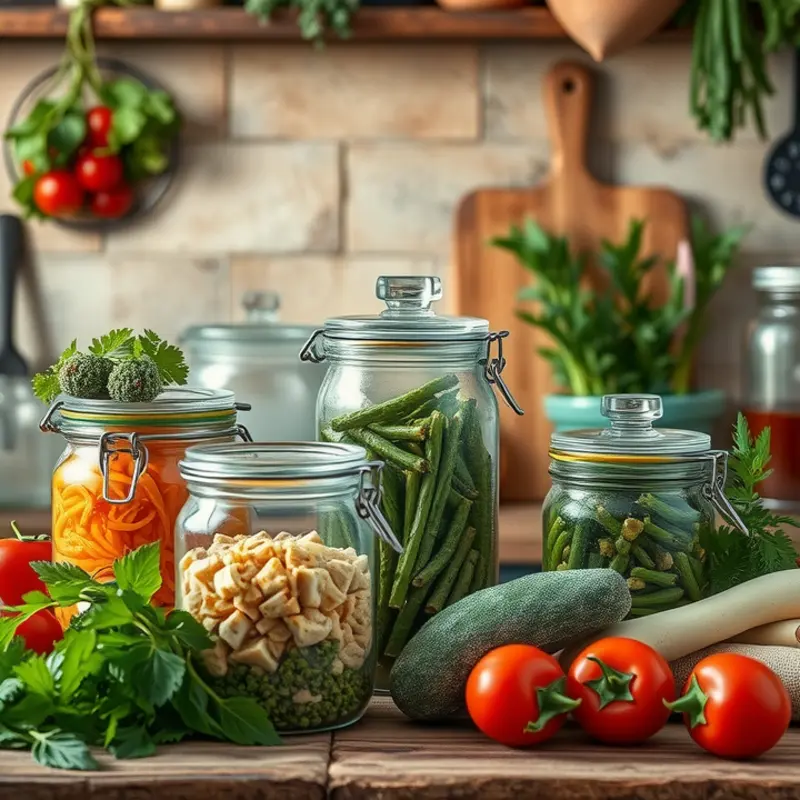Adopting a healthier lifestyle doesn’t have to be complex or overwhelming. With simple strategies and mindful eating habits, anyone can embark on a nutritional journey that fits their lifestyle. This guide provides clear, achievable meal strategies tailored for health-conscious individuals and beginners alike. Dive into realistic meal options that can nourish your body while fitting seamlessly into your daily routine. Let’s make healthy living enjoyable and attainable!
Building Balanced Meals: The Foundation

A balanced meal is more than just a collection of ingredients; it’s a symphony of nutrition and flavor that fuels our body and satisfies the soul. To craft these meals effectively, it’s essential to understand the core components: protein, carbohydrates, fats, vitamins, and minerals. Let’s delve into these elements and explore how to create nourishing dishes.
Protein: Think of proteins as the building blocks for your body, crucial for tissue repair and muscle growth. Include lean sources like chicken, fish, beans, or tofu. For instance, a grilled chicken breast can be a cornerstone for many meals, providing low-fat, high-quality protein. If seafood is your preference, our speedy seafood prep tips can guide you in creating quick and nutritious dishes.
Carbohydrates: These are your body’s primary energy source, but not all carbs are created equal. Opt for complex carbohydrates such as whole grains, legumes, and vegetables. These provide sustained energy and are packed with fiber that aids digestion. A simple swap from white rice to quinoa or brown rice can significantly boost your meal’s nutritional profile.
Fats: Don’t shy away from fats—they’re essential for absorbing vitamins and providing energy. Focus on healthy fats like those found in avocados, nuts, seeds, and olive oil. A drizzle of olive oil over your salad not only enhances flavor but also delivers valuable nutrients.
Vitamins and Minerals: Fruits and vegetables are your go-to sources for these vital nutrients. Aim for a colorful plate to ensure a broad intake of vitamins and minerals. A salad with spinach, tomatoes, carrots, and bell peppers will not only be visually appealing but also nutritionally robust.
Portion Control: Balancing your meals is as much about the right components as it is about the right amounts. Use visual cues like dividing your plate into quarters to manage portions: one-quarter protein, one-quarter carbohydrates, and half vegetables and fruits.
Practical Meal Examples: Start with a grain base such as quinoa. Add grilled chicken, roasted carrots, and steamed broccoli. Top with a spoonful of hummus or a slice of avocado for healthy fats. Sprinkle some seeds or nuts to elevate the texture.
Creativity with Flavors: Experiment with herbs and spices to keep meals exciting yet healthy. Incorporating spices like cumin, rosemary, or basil can transform a simple dish into a culinary delight without adding extra calories or sodium. For more ideas on enhancing flavor without salt, check the flavor boosters guide.
By understanding how to build balanced meals, you’ll not only meet your nutritional needs but also enjoy a diverse palette of tastes and textures. Your ability to blend these components will form a solid foundation for a lifelong healthy eating journey.
Meal Prep: Your Weekly Healthy Planning Buddy

Meal prepping can transform your approach to maintaining a nutritious diet, minimizing daily decision-making while maximizing efficiency. To get started with meal prep, begin by evaluating your weekly schedule and identifying when you’ll need quick, healthy meals. Allocate an afternoon or evening, preferably at the start of your week, to dedicate a couple of hours to prepping. This initial effort can provide a week’s worth of meals that support your health goals and reduce stress during busy days.
Start by selecting a collection of recipes that prioritize whole, nutrient-dense foods. Aim for a balance of lean proteins, whole grains, healthy fats, and plenty of vegetables. Consider your preferences and dietary needs as you plan your meals. To inspire you, try new flavor combinations or explore global cuisines to keep your meals exciting and satisfying.
Efficient grocery shopping complements meal prepping. Create a detailed list organized by store sections to streamline your trip. Purchase items in bulk when possible to save money and reduce packaging waste. For inspiration on efficient meal planning, explore minimal prep dinner ideas, which focus on simplicity and speed, ensuring you have no reason to skip a meal.
Once home, begin prepping by batch-cooking certain components, like grains or proteins, in large quantities. Chop vegetables in advance and store them in airtight containers to maintain their freshness. Consider cooking one-pot meals or soups, which can be portioned and stored easily. Learn about optimal storage techniques to keep your meals fresh, such as glass containers that maintain flavor and prevent spills.
Storing and organizing your prepped meals plays an essential role in meal prepping. Label containers with dates to monitor their freshness and use stackable containers to maximize fridge space. Familiarize yourself with safe storage practices to ensure your meals remain safe and delicious throughout the week. Practice thoughtful ingredient batching for seamless prep time and fewer kitchen mishaps.
Meal prepping is a flexible strategy. Customize it to fit your lifestyle by adjusting the quantity of meals you prepare each week or adding variety through different cooking techniques. The ultimate goal is to create a sustainable routine that makes healthy eating effortless and enjoyable.
With these steps and tips, meal prepping can become your ally in a balanced nutrition journey. The initial investment of time will yield a streamlined meal process that supports your health and frees you to focus on other important facets of your life.
Final words
Taking the first steps toward better nutrition can feel daunting, but with the right strategies, it can be both simple and enjoyable. By focusing on balanced meals and effective meal prep, you can ensure a nourishing diet that fits your lifestyle. Remember that every small change contributes to your overall health. Embrace healthy eating as a journey rather than a destination, and allow your culinary creativity to flourish. Start today by incorporating these strategies into your routine, and experience the joy of nourishing your body with wholesome foods.







